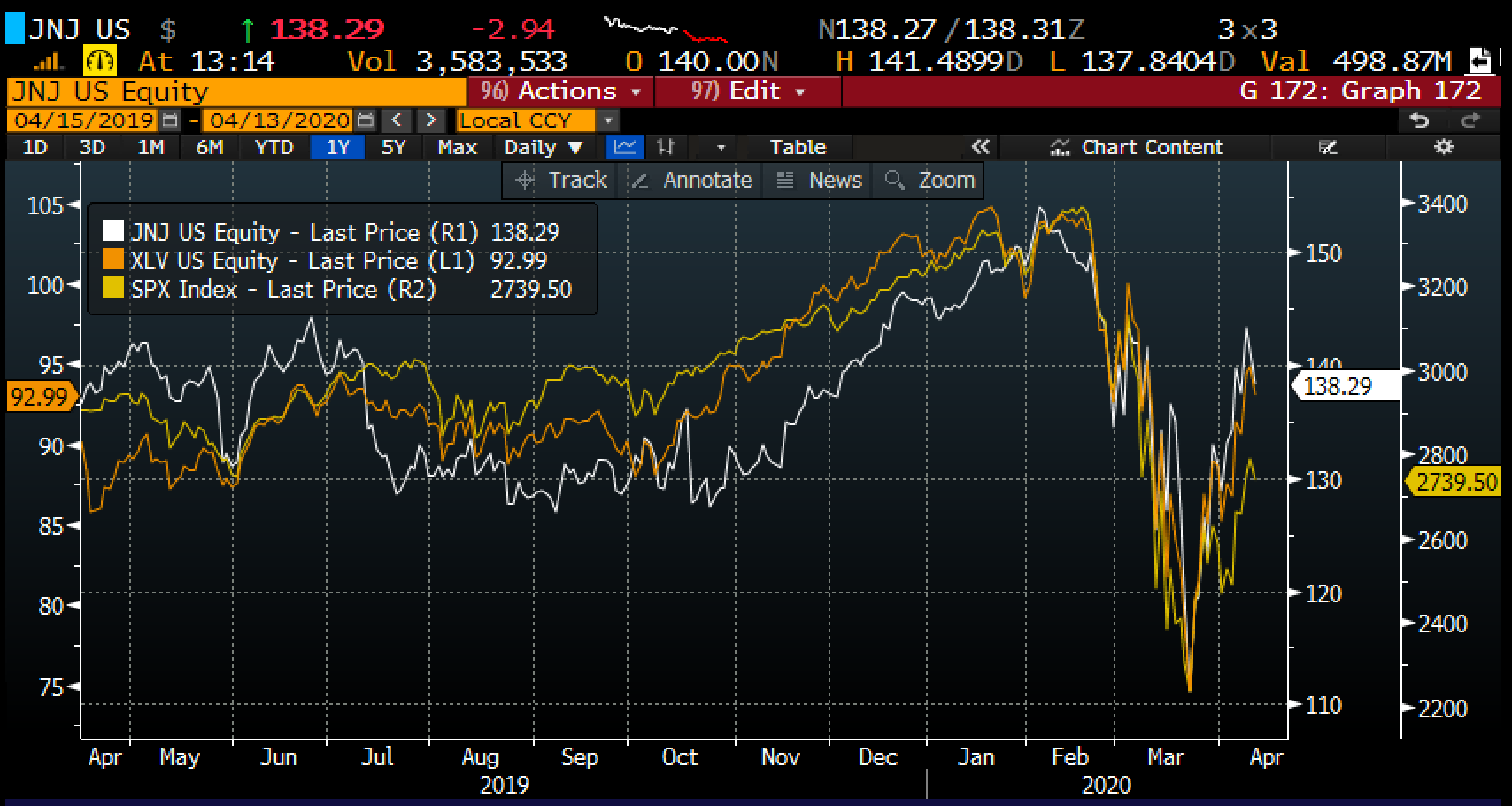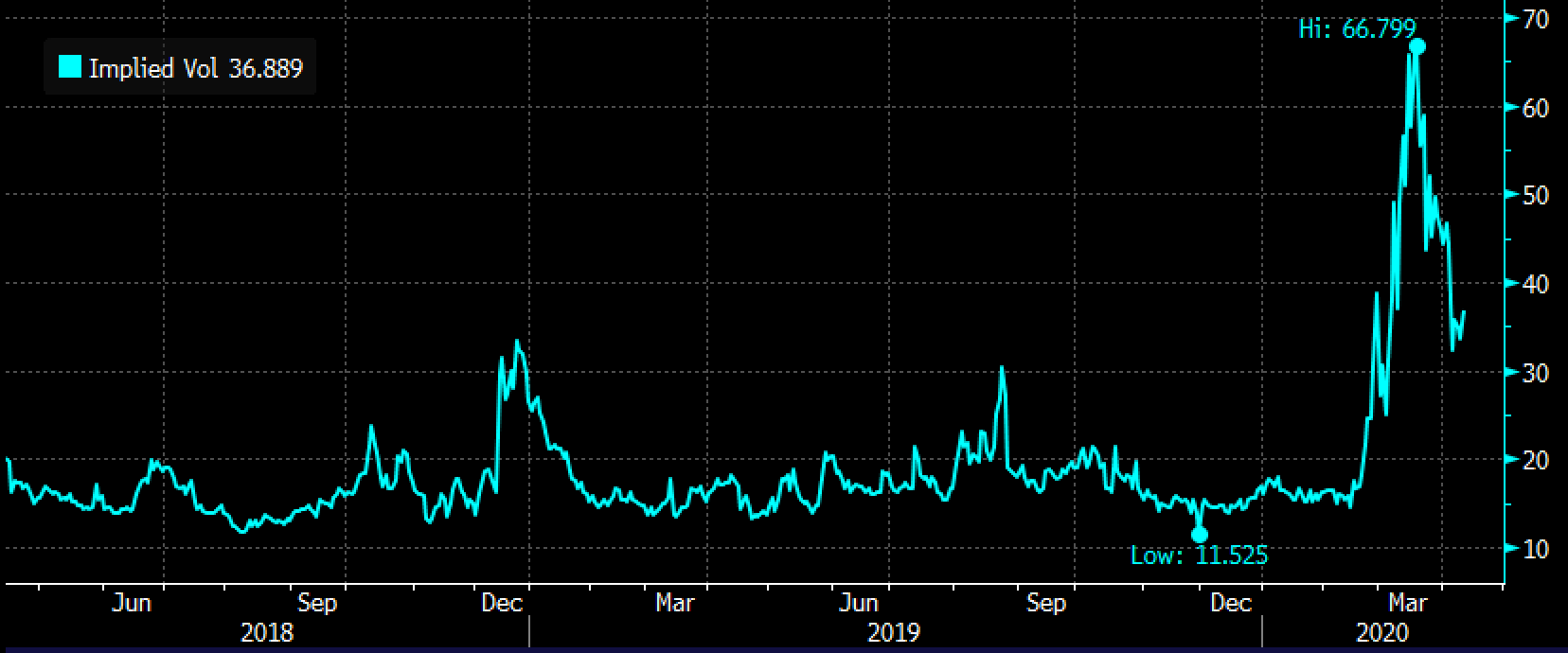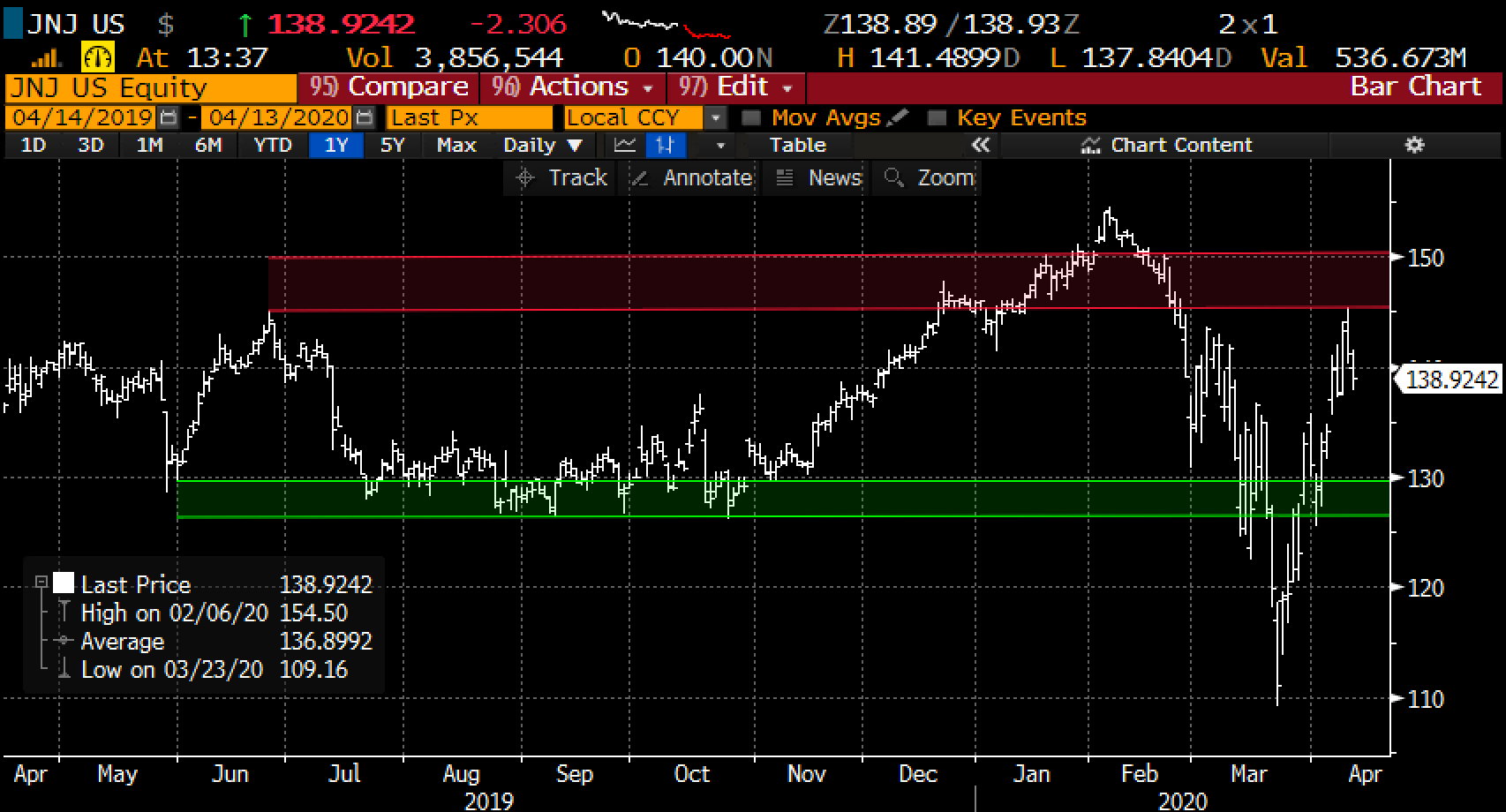Tomorrow before the open, Johnson & Johnson (JNJ) will report their Q1 earnings. The options market is implying about a 5% view between now and Friday’s close. Much of that move is for the one day move tomorrow, but on average, the stock has moved only 1% the day following the last four quarters.
As a quick reminder, here is how we can quickly back of the napkin figure out the implied move…With JNJ near $138, we would take the at the money weekly straddle (the call premium + the put premium) and divide by the stock price…that is the weekly implied move. The Apr 138 straddle would cost $7, if you bought that and thus bought the implied weekly movement, you would need a rally above 145 or a decline below 131 by Friday’s close to make money, or about 5% in either direction.
Shares of JNJ are down only 5% on the year, and down 10% from its all-time highs made in early February, basically inline with the performance of the iShares Healthcare Select ETF of which it is 10.5% of the weight, but outperforming the S&P 500 (SPX) which is down 19% from its all-time highs in Feb and down 15% on the year.

As was the case with most singles stock options, short-dated premiums in JNJ reached multi-year highs last month, have come off considerably with the stock and broad market’s rallies, but is still well above levels from just a couple months ago:

This is going to be a pretty consistent theme during earnings season, for a few reasons. First the lack of visibility on the earnings and macro front. Second, the sharp rally in the stock and the broad market of late could quickly evaporate and options premiums would at the very least stay bid of head higher. This making long premium directional strategies very difficult, but presenting attractive short premium strategies for long holders.
So what’s the trade?
For instance, if you were long the stock but fear-full of a re-test of the prior lows in the coming months, don’t want to sell the stock, willing to give up some potential upside for defined risk to the downside, then consider collars, selling 1 out of the money call (vs 100 shares of stock, and using the proceeds to help finance 1 out of the money put), thus creating a range where you can have gains of the stock to a certain point, have losses down to a certain point, but protected below the long put strike…
Lets first look at the chart to help inform strikes…

The stock has resistance starting at its high from last week near $145, which was also a breakdown level in late February, put to about $150 near its blow-off top… and then support between 130 and $125 which was a cluster of support from last summer and fall, that when it broke down below in early March the stock dropped 15% quickly.
Hedge Idea: Collar vs 100 shared of JNJ at $138, Buy May 145 – 130 collar for even money
-Sell to open 1 May 145 call at ~$3.30
-Buy to open 1 May 130 put for about ~$3.30
Break-even on May expiration:
Profits of the stock up to $145, stock called away at 145, up $7
Losses of the sock down to 130, but protected below
Rationale: one would only do this if they want to stay long the stock, more worried about near term volatility to the downside, but willing to give up some potential upside for defined risk to the downside.
Or If you were less worried about downside, but wanted to take advantage of elevated options premiums to add yield to an existing long, you could merely do the calls sale vs long stock, as a straight overwrite.
For example: vs 100 shares JNJ long at $138, sell 1 May 145 call at $3.30
Profits of the stock up to 148.30, but stock called away at 145 or higher, with the effective call away level up 7.6% including the premium received from the call sale.
Losses of the stock below $134.70, the current stock price less the premium received from the call sale, creating a small buffer of about 2% the downside.
Or for those looking to make directional bets but think elevated options premiums create an opportunity, consider calendars, selling a short-dated out of the money strike and buying the same strike of a longer-dated expiration, targeting the implied weekly move of about 5%… for instance…
If Bullish, Buy the JNJ ($138) Apr – June 145 call calendar for $3.50
-Sell to open 1 Apr 145 call at $1
-Buy to open 1 June 145 call for $4.50
Break-even on Apr expiration:
The ideal scenario is that JNJ is near $145 on April expiation, if below the short call strike it will expire worthless and you will be left long the June 145 call for only $3.50 as opposed to the $4.50 it costs now. If the stock is at or above the 145 strike than the short call can be covered if you want to stay long the June 145 call. The idea of the trade idea is chip away at the longer-dated premium and set up for a rally later this spring. This trade idea risks about 2.3% of the stock price and would only be lost near term on an extreme move higher or lower than the current price or strikes of the trade idea.
Or
If Bearish, Buy the JNJ ($138) Apr – June 138 put calendar for $4
-Sell to open 1 Apr 130 put at $1
-Buy to open 1 June 130 put for $5
Break-even on Apr expiration:
The ideal scenario is that JNJ is near $130 on April expiation, if above the short put strike it will expire worthless and you will be left long the June 130 put for only $4 as opposed to the $5 it costs now. If the stock is at or below the 130 strike than the short put can be covered if you want to stay long the June 130 put. The idea of the trade idea is chip away at the longer-dated premium and set up for further lows later this spring. This trade idea risks about 2.8% of the stock price and would only be lost near term on an extreme move higher or lower than the current price or strikes of the trade idea.